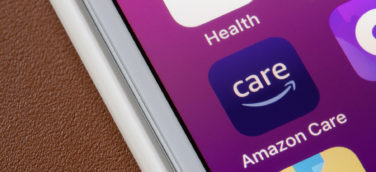Edward Fotsch, MD, is chief executive officer of PDR Network, a provider of drug and device information for prescribers. PDR Network supplies drug safety and clinical information to hundreds of thousands of prescribers and pharmacists within their workflow. Dr. Fotsch has been a national leader in healthcare IT for two decades, serving on multiple national health information technology (HIT) committees and panels, including work with HHS, CMS, FDA, and industry. He is the author of Planning and Implementing Your Healthcare Internet Strategy, and was the first recipient of the Liability Carrier Annual Patient Safety Award.
PM360: PDR has focused a great deal on electronic health records— EHRs. Why are they relevant to you, and to pharma?
ED FOTSCH: To fulfill their regulatory, safety, and marketing missions, pharma companies have to engage physicians. They have to get physician time and mindshare. Electronic health records represent the pharmaceutical industry’s first opportunity to directly engage the physician, at the point of care and within the doctor’s workflow. In the past (I say as a physician who has written some 10,000 prescriptions in the 10 years I’ve practiced), the pharmaceutical industry has had no good way of engaging physicians in their workflow. Instead, manufacturers provided distractions to workflow—reps, and pizzas, and donuts, and baseball tickets—or conferences, which are great, except that when you’re at a conference, you’re not seeing patients. With EHRs, you can have the information—regulatory, safety, adherence, what have you—right at the point of care of prescribing. So, the changes to physician workflow open up a new venue for pharma to engage healthcare providers.
EHRs have been talked about for years with limited uptake. What has changed, and why?
Well, the big thing is the tens of billions of dollars in stimulus funding that has been set aside to pay physicians extra—about $50,000 per doctor— for adopting an EHR. Behind those incentives are penalties, cuts in Medicare and Medicaid payments for doctors who don’t adopt EHRs. All the big commercial payers— Aetna, Cigna, Anthem—have put in incentives for EHR adoption. Hospitals are buying EHRs for their doctors.
How do EHRs impact a physician’s workflow, and why is that relevant to pharma?
Physicians’ workflow has three fundamental components: they have a conversation with the patient; then they chart, recording their findings in the medical record; and then they charge for the service. So, doctors “chat, chart, and charge” for a living. If you’re not chatting, charting, or charging, you’re not making any money. Unlike lawyers, accountants, or other professions, doctors don’t get to bill by the hour. Your attorney would charge you for doing an hour’s research on a legal issue. Physicians have no charge code that says, “I spent an hour thinking and reading about your condition.” Most doctors’ overhead runs about 50 percent. If they lose 10 percent of their productivity—if they see nine patients when they could have seen ten—their take-home pay actually drops 20 percent, because the overhead doesn’t drop at all. So, they’re pretty focused on productivity. They can’t afford downtime.
What does this time crunch mean to marketers? In theory, you could get a relevant regulatory, safety, or marketing message on the EHR screen at the point of prescribing.
Take the simple example of a boxed warning on a drug. Right now, the pharmaceutical company hires a vendor who distributes the FDA-approved boxed warning via U.S. Mail, the internet… or fax (some practices are still paper-based). And then maybe the doc sees it, and maybe he or she doesn’t. If you miss a boxed warning, something bad happens.
It’s not hard to see that it would be better if the system delivered the boxed warning as the doctor was writing the prescription at the point of care.
Or look at the more commercial side—at medication adherence, for example. There are all kinds of programs to help patients get their medications less expensively. At the moment of prescribing, though, it’s unlikely that the doctor will know about the precisely relevant discount program for this specific patient. At the same time, doctors are very aware that many patients are struggling to pay their drug bills. Most docs would undoubtedly take a second or two to help a patient save $20 on a prescription drug, if it was easy and right there.
Whether it’s a boxed warning or an adherence program, you want the information right there when the doctor needs it…but you don’t want anything that disrupts physician workflow. It has to be something that offers information, but doesn’t require an extra step.
We try to look at electronic health records the way Steve Jobs might have looked at a mobile phone. The phone was designed to make a phone call; EHRs were designed to do charting, charging, and scheduling. But properly viewed, the mobile phone is a communication platform: with the right apps, it can have all kinds of uses. So we ask: what apps could be plugged into the EHR that would help the docket through the day, that would advance patient safety, that would advance medication adherence? So we’re sort of in the EHR app business.
Where do you think manufacturers are now with regards to understanding EHR adoption and coming up with an EHR strategy?
We have seen a big shift in manufacturers’ understanding and appreciation of EHR adoption. But, I would have to qualify that. A year ago, our EHR meetings would open with someone on the client side saying, “Thanks for coming today. Before we get started, can you tell us what an EHR is, or what it stands for?”
That’s really rare now. Over the past three months, the people in the room are fully aware of the meaningful-use requirements for doctors to get the funding for EHRs. They may not have come up with their own strategy, but they know that the topic is relevant, and that they need to pay attention to it. Let’s call that the strategic level. Many pharma companies have formed enterprise-wide strategy groups to come up with EHR plans. The brand teams, however, are often in a completely different place. They have a different horizon, and are really focused on the quarter. “How do we keep rockin’ and rollin’? How do we finish the end of the year?”
Most marketers are probably thinking that someone else in the organization is looking into EHRs and their impact— that “When there’s a strategy I should be executing, they’ll let me know.” The concern we have for our clients is that this thing is coming awfully fast. Some of our clients are way ahead of the others. They’re ready to engage with electronic health records. Some of them already have.
Can you provide a concrete example of pharma using EHRs to achieve a regulatory or marketing goal?
The simplest one would be adverse drug event reporting, integrated into the electronic health record. We’ve rolled that out. Simple stuff, better information, a better experience for the doctor. If you go to Athena, one of the electronic health record vendors, they’ve got adverse drug event reporting integrated into their EHR. You can also go to RxEvent.org and report direct via the web. The real value is having it in workflow. Soon, users will be able to receive their ADR reports and respond back to the clinician on the same network.
What advice do you have for brand managers as it relates to EHRs as they make their 2012 plans?
On your own, take an hour or two to educate yourself about EHR adoption and incentive programs. There are lots of articles on the internet. Second, to the extent you can, focus on EHR adoption for the specialties that you’re interested in. Third, find out who in your organization is the EHR guru—someone who knows not only technology but strategy.
I do think 2012 is the year that most brand managers are going to have to have and start to execute an EHR strategy. It’s just too big an issue for too many doctors to not have a strategy in 2012.





